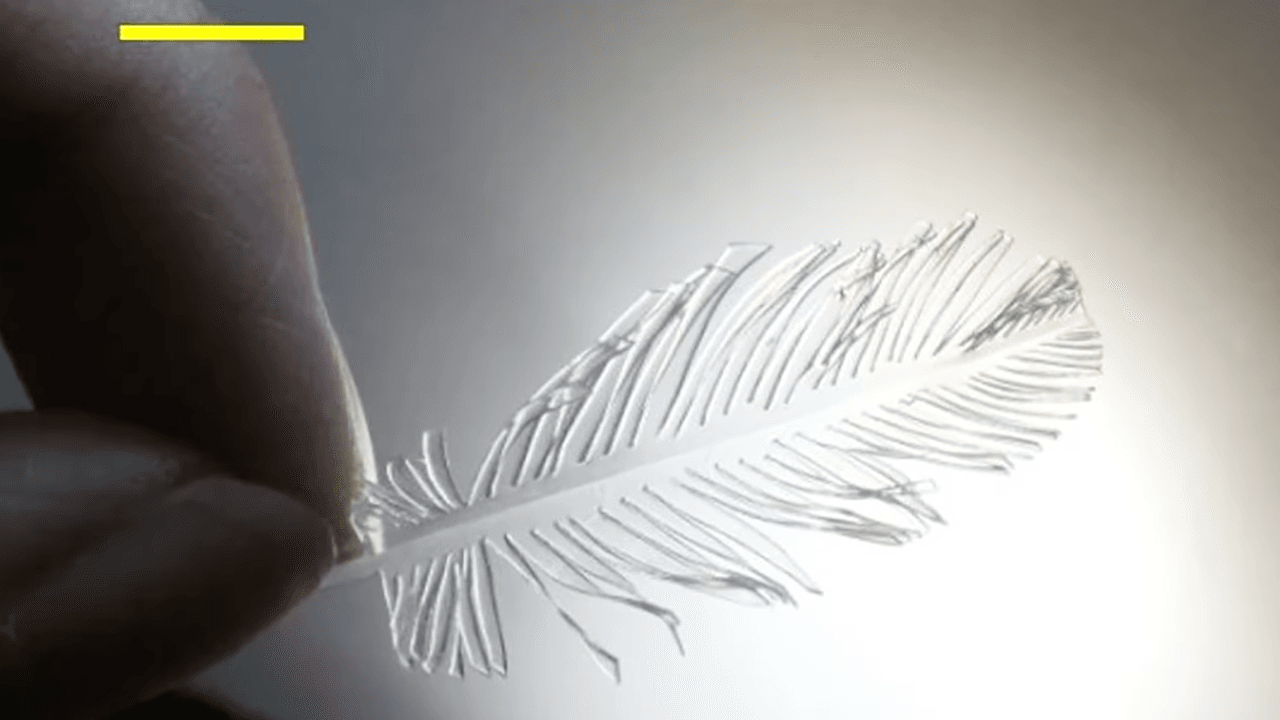The spring meeting of the American Chemical Society (ACS) was held virtually and in person March 26–30, 2023, and featured more than 10,000 presentations on a wide range of science topics. Read on to discover some of the exciting research presented at the meeting.

The Japanese art of origami involves transforming a square of paper into a 3D object through folding and sculpting. Now, this ancient art form is inspiring new research that could pave the way for designing modern devices and platforms from harder materials such as glass or ceramics.
Typically, these types of materials are molded, but this technique places limitations on the intricacy of shapes and details that can be achieved. Newer approaches with 3D printing can produce more complicated shapes, but the structure can be flimsy and the final piece may not have the desired surface texture.
A team of researchers from Zhejiang University, China, have unveiled a new method of shaping harder materials with precision and intricacy. This approach expands upon previous work published in Chemical Reviews, in which the authors reviewed methods inspired by origami and the related technique of kirigami (which combines cutting and folding) to shape soft polymer materials.
In their latest work, the team mixed nanoparticles of silica (the primary component of glass) into a composite liquid before curing it with UV light to produce sheets of a cross-linked polycaprolactone polymer with paper-like mechanical properties. Cutting, folding, and twisting allowed the researchers to transform the polymer into various shapes, from a traditional origami crane to a vase with lace detail.
At room temperature, the polymer composite retained its new shape throughout manipulation, but the researchers found that a temparature of 265 °F is required to permanently rearrange the links between the polymer chains and allow the material to maintain its final form.
To subsequently remove the polymer and retain only clear glass with a smooth, non-layered texture, two further heating steps were required, at 1,100 °F and then 2,300 °F. These temperatures align with those reached in kilns used for amateur pottery classes and art studios, and certainly scalable for commercial use.
This novel approach offers a way to effectively process harder, inorganic materials into complex 3D shapes. This modern interpretation of an ancient art form can be combined with 3D printing, with wide-ranging applications from sculpture to catalysis, microfluidics, and beyond.
Watch the video briefing from the ACS Meeting Newsroom:
Explore Related Research from ACS Journals:
A Self-Assembled 3D-Shaped Microstrip Microwave Device Inspired by the Origami Structure
Lei Han, Chuyuan Gao, and Lijun Chen
Reprogrammable Self-Folding Thermoplastic Sheets Using Elastic Filaments
Duncan Davis, Russell Mailen, Elton Luong, Alan Russell, Michael D. Dickey, and Jan Genzer
Origami Tribo-Metamaterials with Mechanoelectrical Multistability
Pengcheng Jiao, Hao Zhang, and Wentao Li
Calligraphy and Kirigami/Origami-Inspired All-Paper Touch–Temperature Sensor with Stimulus Discriminability
Xiaoqian Liu, Jing Sun, Yanhong Tong, Mingxin Zhang, Xue Wang, Shanlei Guo, Xu Han, Xiaoli Zhao, Qingxin Tang, and Yichun Liu
